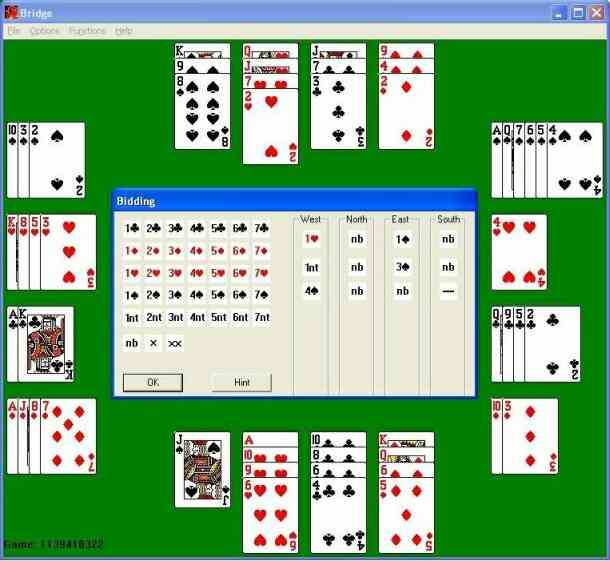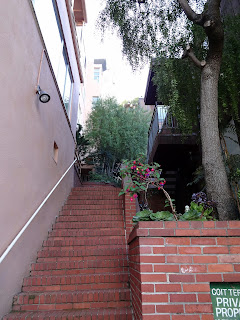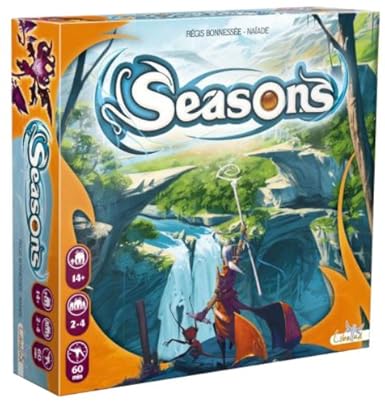A few months ago, I stumbled across something particularly cool on Google Offers: a discount on an "
UrbanQuest," pitched to me as an Amazing Race-style urban scavenger hunt. Combine my favorite guilty pleasure reality show (at least my favorite not involving Gordon Ramsay) with my newfound
obsession with love for puzzlehunting, and it seemed like a can't-miss.
The premise is simple. You buy a pdf scavenger hunt from the good people at UrbanQuest, and it leads you through part of a city, generally a neighborhood (like San Francisco's North Beach, the setting for this quest) or district (like Fisherman's Wharf) or chunk of town associated with some landmark (like Boston Common). Along the way, you visit both the big touristy attractions and smaller, more secluded places you might have missed completely otherwise.
Once you've gathered all the clues, you can use them to solve a little meta-puzzle, which will unlock a word or phrase. And when you put that word or phrase into the UrbanQuest website, your reward is a reservation made in your name at a local restaurant, giving you yet more chance to see the local sights.
I hadn't had an occasion to run the quest I bought until last week, but I was so excited by the concept that I immediately volunteered to playtest UrbanQuest's unreleased quests. I can't go into the details of what I tested, but I'll compare the experience of running a "beta" to this one, my first "finished" quest that I had the chance to play. I decided that Steph's visit to the Bay area was all the excuse I needed to launch the quest, called "San Francisco City Link". So once she was here, we picked the sunniest day of a cloudy March week and headed into the city to scavenge through North Beach, also known as San Francisco's Little Italy. I'd been to North Beach before, of course, but I'd never spent much time in it, and I'd certainly never seen all it had to offer.
The directions dumped us in Washington Square, and no sooner had the quest started than did I learn something new about San Francisco: that little patch of green space in front of Saints Peter and Paul Church is called Washington Square. We walked around the square a bit, hit up a couple of monuments that gave us our first clues, and (in an especially Catholic detour) spent a few minutes in quiet contemplation of the gorgeous inside of the church.
From there, it was off to Coit Tower, where we tackled probably the toughest clue on the quest, a spot-the-differences that stretched across the murals inside the Tower's ground floor. We took another detour--this one more sightseeing than spiritual--up the Tower, which wasn't part of the quest but enough worth seeing that we went anyway.
An artsy Pantheon-esque shot of the top of Coit Tower
We took the back exit out of the Tower, not the one that least west toward Columbus, but the one that leads east down Telegraph Hill. What a beautiful place:
This is what it looks like walking down from Coit Tower looking out onto the Bay.
Julius Castle apparently used to be a restaurant popular with celebrities. It looks sort of defunct these days, but it's still a really cool building that I'd never seen before.
Someone actually lives here, as seen by the "private property" sign. Sadly, it is not me.
One thing that always stuns me about North Beach is its relative serenity situated half a mile away from Chinatown in one direction and half a mile away from Pier 39 in the other, probably two of the city's most crowded and overwhelming tourist areas. It was even more peaceful and isolated on the less-beaten path through the neighborhood. After stopping to grab some more clues from an art deco-style mural on the side of an apartment building and an old rusty tuba mounted outside a music shop, the quest led us to Dante's baseball mural.
We didn't get the whole story, but it seemed that Dante was a local legend and a mentor to young baseball players. He passed away in 2005, but his old players are still in the stands at the bottom of the mural. Such a nice piece of local flavor is only a block or two off Columbus, yet it's another part of the neighborhood I never knew about.
After Dante's, we headed to the Shrine of St. Francis to translate some Italian, and finally stopped at a North Beach intersection I'd walked through before but never stopped to appreciate exactly how awesome it was:
Our last clue was another spot-the-differences amongst the words that had fallen out of the books and were embedded in the ground. Then, we stopped at a local espresso shop to solve the metapuzzle, a relatively tame one (by metapuzzle standards) that involved a bit of computation and anagramming. Our reward was the reservation made in our name at the Mona Lisa restaurant, one of many Italian places nestled on Columbus. (You can choose from a list of about ten restaurants when you initiate the quest. You don't know exactly which one you'll be going to, but you get a short description, and a mid-priced Italian place that wasn't particularly fancy was exactly what we were looking for.)
I'm notoriously terrible at restaurant-picking, especially in an environment like North Beach with so many tasty restaurants so close to each other, so it was really nice to have a restaurant decided for me at the end of the day. (It didn't hurt that the seafood linguini was fantastic.)
Steph and I had a ton of fun working through this, and we were pleasantly surprised at the diversity of destinations included on the quest, both well-known landmarks and secluded buy lovely pieces of art. Our major critique was that we would have liked the quest's final clue to have taken us somewhere convenient to work through the metapuzzle; we didn't exactly mind having to duck in and grab an espresso, but in neighborhoods where streetside cafes are less common, this might have become an issue.
Compared to the playtest I did a few months ago, it was certainly more fun working with a partner, and it helped to have another set of eyes looking at the trickier puzzles, especially the intensely visual ones that require spotting fine details (and these seem to be a favorite of UrbanQuest's). Neither quest was particularly difficult from a puzzle standpoint, with the most difficult tasks requiring counting details on pictures or finding out-of-the-way signs that aren't easily spotted. The San Francisco City Link
That said, the puzzle
design on both quests was very good. Constant checkpoints ("you'll pass two boats on your right," "you should see a doorway with a diamond-shaped archway," etc.) ensure that you're on the correct path, which is important (and undervalued) in puzzlehunting, and even more important when you're in an unfamiliar part of a city. Every puzzle was absolutely solvable and valued discovery more than obscure solution extraction. If you're a gamer who relished every moment of the
2013 MIT Mystery Hunt, then UrbanQuest might not be exactly what you're looking for in a puzzling experience, but it's otherwise a great experience for puzzlers and urbanites alike.
I have been nothing less than entirely impressed with UrbanQuest in all my interactions with them--even when I had a problem redeeming my Google Offers code, one of UrbanQuest's employees resolved my issue within 12 hours. UrbanQuest is a wonderful method for discovering a new part of a city, and I wouldn't hesitate to buy another quest for the next place I visit--whether it's new to me or I've been there a dozen times before, I know I'd find something new, and get the change to solve a few puzzles along the way.
 Keltis Ór appears to remain unpublished at this time but I had a chance to try an online version. As I'm not a particularly big Keltis enthusiast or have much experience with dice games I had low expectations but I was pleasantly surprised.
Keltis Ór appears to remain unpublished at this time but I had a chance to try an online version. As I'm not a particularly big Keltis enthusiast or have much experience with dice games I had low expectations but I was pleasantly surprised.









_Violante_Beatrice_of_Bavaria_(1673-1731)_daughter_of_Ferdinand_Elector_of_Bavaria_and_wife_of_Ferdinando_de%E2%80%99_Medici.jpg)




















